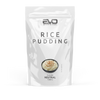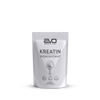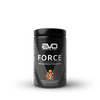One Rep Max (1RM) calculator
Calculate your one repetition maximum for your strength training using our 1RM calculator.
What does One Rep Max (1RM) mean?
The one-repetition maximum (1RM) describes the maximum weight that a person can handle in a specific exercise for exactly one repetition. It is a crucial indicator of strength performance and serves as a basis for training planning. The 1RM is often used in strength sports such as powerlifting and weightlifting.
Why is 1RM not the same as maximum strength?
Although the 1RM is often used synonymously, it is not identical to maximum strength. Maximum strength describes the highest possible strength output of the neuromuscular system. The 1RM, on the other hand, is influenced by various factors such as technique, muscle fatigue and range of motion. An actual one-repetition maximum measurement is often subject to a certain margin of error.
How can you directly test the one-repetition maximum?
The direct determination of the 1RM is done by gradually increasing the weight until one repetition can be completed with maximum load. A good warm-up phase, clean technique and the presence of a spotter are crucial to avoid injuries.
What factors influence your 1-RM?
The 1RM is influenced by numerous factors, including:
- Neuromuscular system: The ability to activate as many muscle fibers as possible at the same time.
- Technique and movement sequence: A clean concentric movement increases efficiency.
- Time of training: The time of day can play a role, as strength performance can fluctuate throughout the day.
- Prior fatigue : Depending on the training volume, performance can vary greatly.
How does our 1RM calculator calculate?
Our 1RM calculator combines the most common formulas in training science to give you the most accurate estimate of your one-rep max (1RM). Each formula interprets weight (G) and number of repetitions (WH) slightly differently. We use:
- Lombardi : G × WH0.1
- Brzycki : G × (36 ÷ (37 – WH))
- Epley : G × (1 + WH ÷ 30)
- Mayhew : (100 × G) ÷ (52.2 + 41.9 × e–0.055 × WH)
- O'Conner : G × (1 + 0.025 × WH)
- Wathan : (100 × G) ÷ (48.8 + 53.8 × e–0.075 × WH)
- Lander : (100 × G) ÷ (101.3 – 2.67123 × WH)
To give you the most accurate value possible, we calculate your 1RM using each of these formulas and then average them. This gives you a solid foundation to optimize your training plans and track your progress as best as possible.
What is the 1RM table used for?
The 1RM table (one-rep max table) allows us to better estimate the performance range from 1 to 10 repetitions. This not only allows us to see which weights we can use for maximum strength, but also gives us clues to optimize our strength training specifically for muscle building . Instead of only training with very heavy weights in the low repetition range, we can also explore the potential in medium repetition ranges thanks to the 1RM table.
FAQ
Should I test my 1RM as a beginner?
As a beginner, you should first perfect your technique and movement sequences before attempting direct 1RM testing. A maximum attempt is very stressful for the body and requires a solid foundation. For beginners, it is often more sensible to build up the training using multi-repetition sets (e.g. 8-12 repetitions) and gradually work your way up to higher intensities.
How often should you measure or calculate your 1RM?
This depends on your training level and your goals. More experienced athletes might incorporate a 1RM check every few weeks or months to monitor their progress. However, if you are training more for hypertrophy, you don't need to test the 1RM at all.
Can I transfer the calculated 1RM to all training plans?
Your calculated 1RM gives you a good starting point for setting training intensities (e.g. as a percentage of the 1RM). However, it is important that you always listen to your body. Your daily form, stress level and other factors influence how much weight you can actually move. Therefore, adapt your plan if necessary, instead of rigidly sticking to a value once calculated.
FUEL YOUR PERFORMANCE.
NEWS

Proteinpulver nach dem Sport: Beste Einnahme für Muskelaufbau
Protein vor oder nach dem Training? Erfahre, wann die Einnahme von Proteinshakes sinnvoll ist – für Muskelaufbau, Regeneration und optimale Proteinzufuhr.
Veganes Proteinpulver ohne Soja: rein pflanzlich, vielseitig & smart für Deinen Alltag
Sojafreie & vegane Power: Veganes Proteinpulver für Veganer – pflanzlich mit Erbse, Ackerbohne & Reis, ohne unnötigen Zusatz, hochwertig für Muskelaufbau.

Schlaf & Muskelaufbau – So wichtig ist er für Dein Wachstum
Das Wichtigste in Kürze Schlaf ist essenziell für Muskelaufbau und Regeneration. Wenig Schlaf hemmt das Muskelwachstum und reduziert Deine Leistungsfähigkeit. Empfohlen: 7–9 Stunden Schlaf ...
























